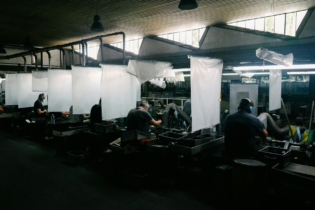PwC South Africa is pleased to share its first South Africa Economic Outlook report for 2023.
The year started with many uncertainties — some old, some new — which could result in different macroeconomic scenarios playing out for South Africa during 2023. In this report, we review PwC’s current scenarios for five key macroeconomic variables (the exchange rate, consumer price inflation, interest rates, economic growth and the unemployment rate) during 2023 as well as the short-term outlook for climate action. The South African rand is forecast to average R16.90$ this year under our baseline scenario, compared to a mean of R16.37/$ in 2022. The rand is very volatile and highly influenced by external factors. This year, these risks include political divisions in Washington, D.C. and local policy developments. Globally, the political and economic ripple effects of decades-high inflation and increased energy costs will add to household financial stress and could stoke social discontent and political instability in many countries. This, in turn, reduces appetite for emerging market assets like the rand. Concern remains about the elevated level of price inflation, especially from a supply chain perspective. However, producer price inflation peaked at 18% y-o-y in July last year, and following declines in the subsequent months, is now seen as being on a downward trend. With easing supply chain cost pressures in mind, as well as the impact of recently tighter monetary policy, we expect consumer price inflation to moderate from 7.0% y-o-y in 2022Q4 to around 5.0% y-o-y in 2023Q4. On a calendar year basis, our baseline scenario is for inflation to average 5.4% this year from a mean of 6.8% in 2022. Alongside this, interest rate hikes are also nearing an end, with the possibility of the repo rate starting to decline from the fourth quarter of 2023. Economic growth slowed last year to an estimated 2.0% and is expected to continue lower in 2023 to just 1.7%. Growth was below potential in 2022 due to, mainly, ongoing load-shedding and is expected to continue to underperform in 2023 due to the expected regular implementation of rolling blackouts. On a positive note, behavioural change has seen the South African public adapt to and mitigate the impact of load-shedding. For example, in 2022, the country imported more than R5bn worth of solar panels, up from around R4bn in the preceding year. We estimate that these panels provide an additional 2,000 MW of generating capacity during 2023. Put differently, based on varying usage patterns, these off-grid solar panels could be saving the rest of the country from an additional stage of load-shedding at any given time. Christie Viljoen, PwC South Africa Senior Economist, says:“Many large companies and wealthy households have been able to adapt to load-shedding by acquiring off-grid power solutions like solar power or diesel generators. While this has made the economy more resilient to the energy challenges, it does not capture the economic pain experienced by, for example, small businesses, non-governmental organisations (NGOs), and the majority of households who cannot afford off-grid alternatives. While small businesses have a smaller overall impact on GDP compared to large corporations, they play a large role in employment, food security and community stability. These small businesses are seeing production downtime, increased supply chain costs, reduced operating hours, and increased security risks due to the lights going out.”
One of the good news stories of late is the employment recovery. During the first three quarters of 2022, South Africa’s total non-agricultural employment increased by a net 1.2 million, reaching 15.8 million jobs in 2022Q3. This, in turn, was the country’s highest non-farm employment number since the outbreak of COVID-19. However, South Africa’s official and youth unemployment rates will remain amongst the highest in the world in 2023, with associated social risks explored in our recently published report ‘Rebuilding social cohesion is essential to South Africa’s economic development’. Also, the expected growth in employment over the next decade (at an average of 1.2% p.a.) will be slower than the anticipated labour force growth rate (1.5% p.a.). As a result, following last year’s labour market recovery, the unemployment rate is estimated to have reached a turning point in 2022-2023, and will slowly rise in the years ahead. South Africa’s social and climate challenges are interlinked. As noted in our recent report ‘South Africa’s just energy transition: moving from planning to action in 2023’, this year is anticipated to be a period of much greater climate action in South Africa. The government recently launched its Just Energy Transition Investment Plan (JET IP) at COP27 for an initial period of five years (2023-2027). In the immediate future, arrangements for JET IP implementation will start in February 2023. The implementation plan will be a product of efforts across government, civil society, trade unions and the private sector. The plan will include relevant timelines and will rely on existing South African institutions and systems — augmented by adopting both local and international best practice across various disciplines. On a practical level, what does the national decarbonisation drive mean for private companies in 2023? Lullu Krugel, PwC Africa Environmental, Social and Governance (ESG) Leader, says: “From our interactions with government and business leaders at COP27, it is clear that evidence of decarbonisation is a powerful differentiator for businesses in an environment where having a CO2 emissions target is merely a licence to operate. Leading organisations are generating value by reimagining how their capabilities will be deployed in a post-carbon world and appealing to sustainability-aware consumers, investors, staff and other stakeholders via sustainable transformations. Climate resilience is a powerful source of protection for South African companies against disruption and value loss.” Key content in this report includes:- Exchange rate: Highly-traded rand’s value will (as always) be determined by local and global factors.
- Consumer price inflation: Declining trend expected from Q2 as production cost pressures decline.
- Interest rates: Monetary policy easing is possible from the fourth quarter.
- Economic growth: Load-shedding remains the biggest challenge to growing the economy.
- Unemployment rate: A turning point in 2023 followed by increased joblessness thereafter.
- ESG focus: From planning to action on South Africa’s Just Energy Transition (JET).








